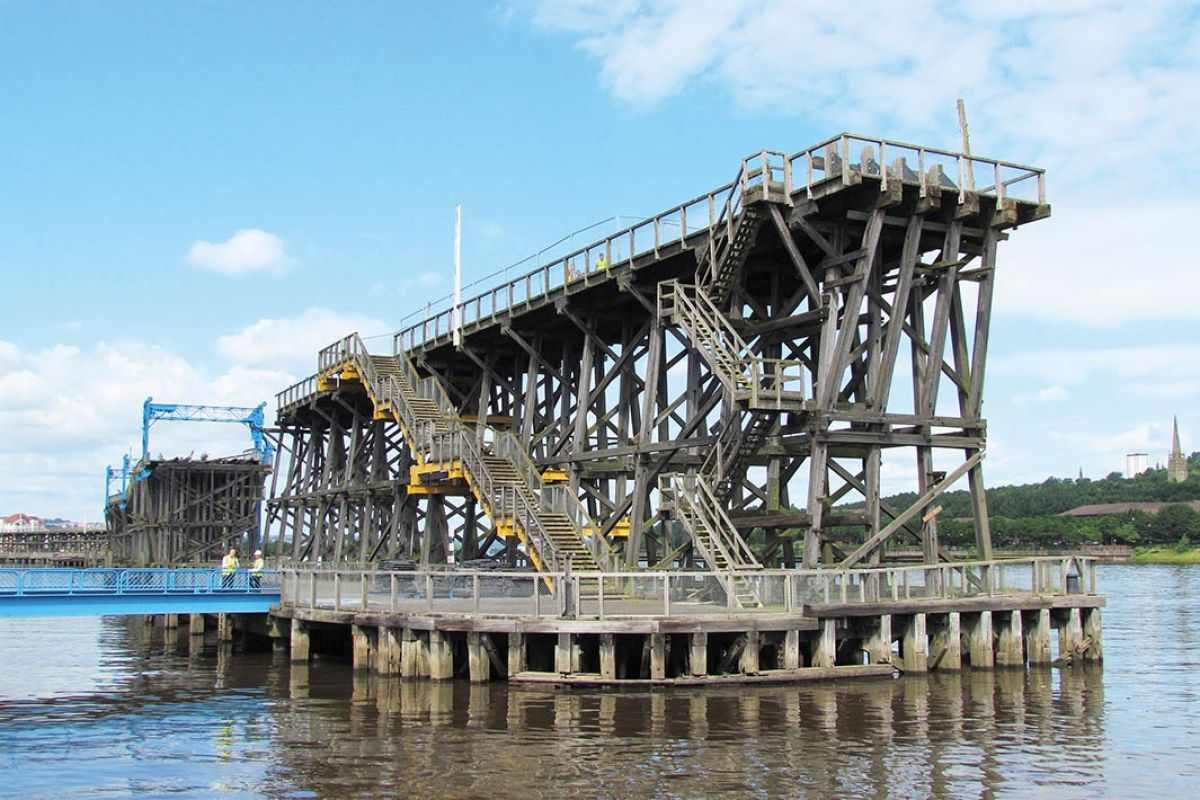
Rory Walsh visits a unique industrial landmark on the River Tyne thought to be the largest wooden structure in Europe
Discovering Britain
View • Urban • North East England • Web Guide
Imagine a short walk on a long pier. Most of us will probably recall trips to the seaside. Few will think of something inland on the Gateshead banks of the River Tyne. The Dunston Staiths opened in 1893 to transport local coal around the world. The name ‘Staith’ comes from the Norse for ‘jetty’. By the 1920s there were thirty coal staiths on the river. Today the Dunston Staiths are the last.
Walking upriver from the Tyne Bridge, the first glimpse is a brown shimmer on the horizon. Continue and the Staiths emerge, ribbed and spiky, like a lurking sea dragon. Snaking through the water for 526 metres, the Dunston Staiths is thought to be the largest wooden structure in Europe.
Up close they are even more impressive. Above a forest of posts and beams, the top decks carried railway lines where wagons emptied coal into waiting boats below. The Tyne’s course into the North Sea was an ideal trade route. At their busiest, the Dunston Staiths sent 140,000 tonnes of coal per week to London, Scotland and Scandinavia.
The coal industry declined following the Second World War and the Dunston Staiths closed in 1980. Ten years later they opened to the public for the Gateshead Garden Festival. Despite being Grade II Listed, and a Scheduled Monument, the Staiths were abandoned for almost 25 years. Then, in 2014, the Tyne and Wear Building Preservation Trust bought and began to restore them.
In the same year, local resident Suzanne Hutton opened the Staiths Café next to the structure. ‘The Staiths are part of our industrial heritage but they are beautiful as well,’ she says. ‘They look so different at different times of day, and the sunsets are amazing.’ Restoration work is ongoing but the Staiths now host various events, including a summer food market. The site is also a venue in The Late Shows local arts festival.
Among others, Hutton has met walking groups, photographers and architects. But people aren’t the only new visitors. The Staiths have become an important wildlife habitat. As the Tyne is no longer dredged, mudflats and saltmarsh have formed around the structure. Birds including lapwings, redshank and golden plovers roost on the Staiths and feed off the mud.
The Staiths are closed from October to March to protect breeding and migrating species. Rare saltwater plants flourish on the riverbanks. ‘There are otters here and we’ve recently seen seals,’ says Hutton. From shipping ‘black gold’ to shaping green space, the Dunston Staiths are a remarkable survivor.

Go to the Discovering Britain website to find more hikes, short walks, or viewing points. Every landscape has a story to tell!




